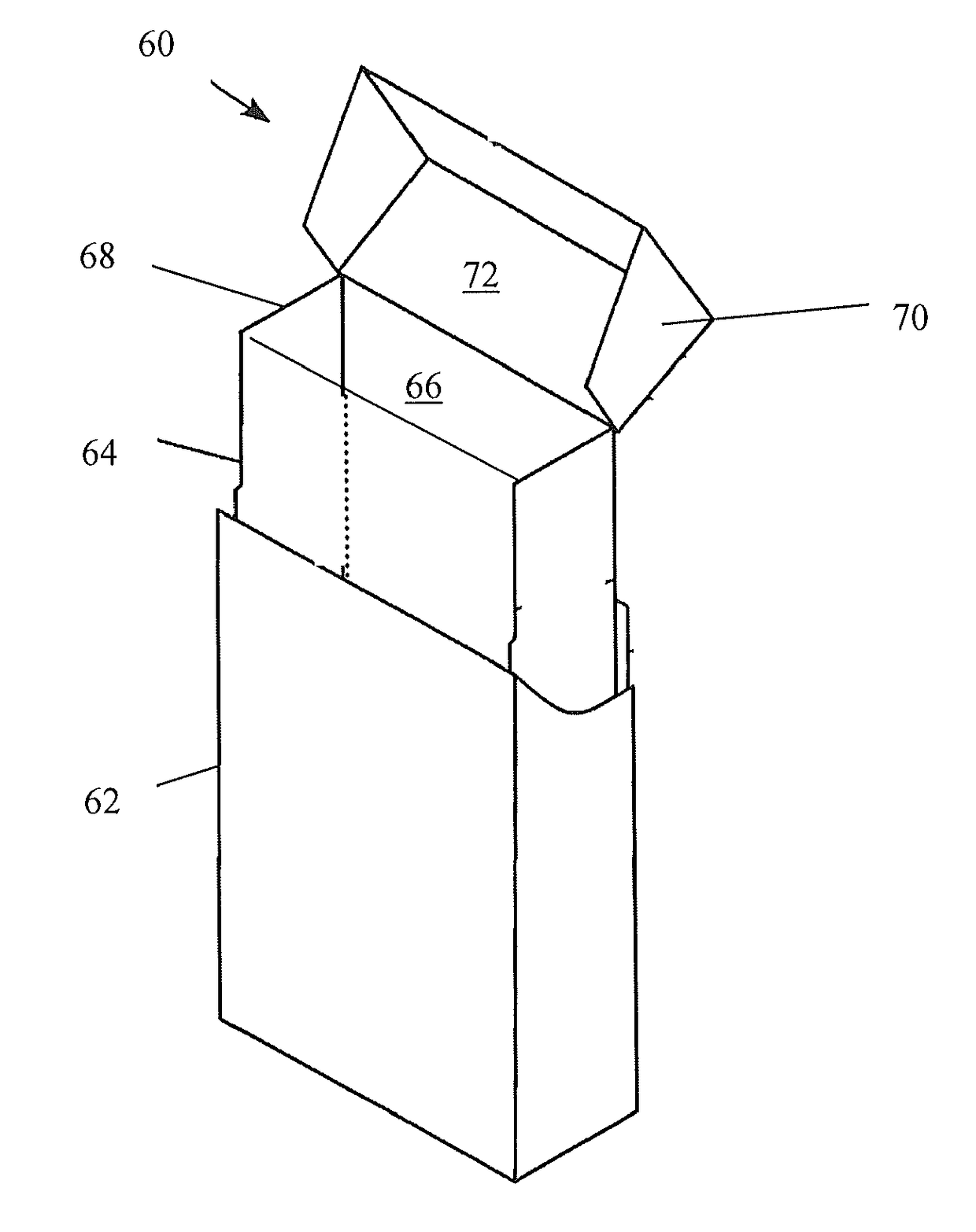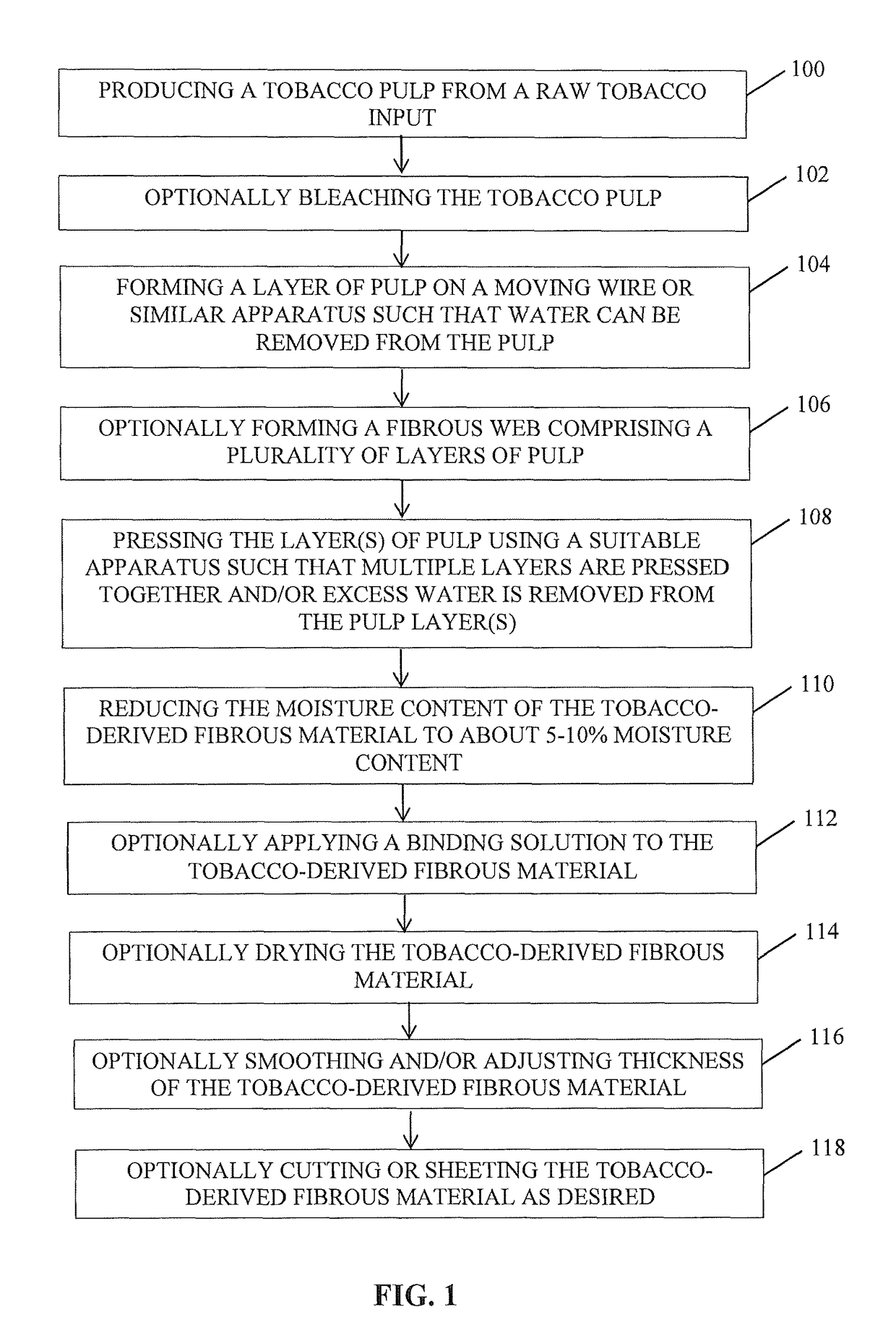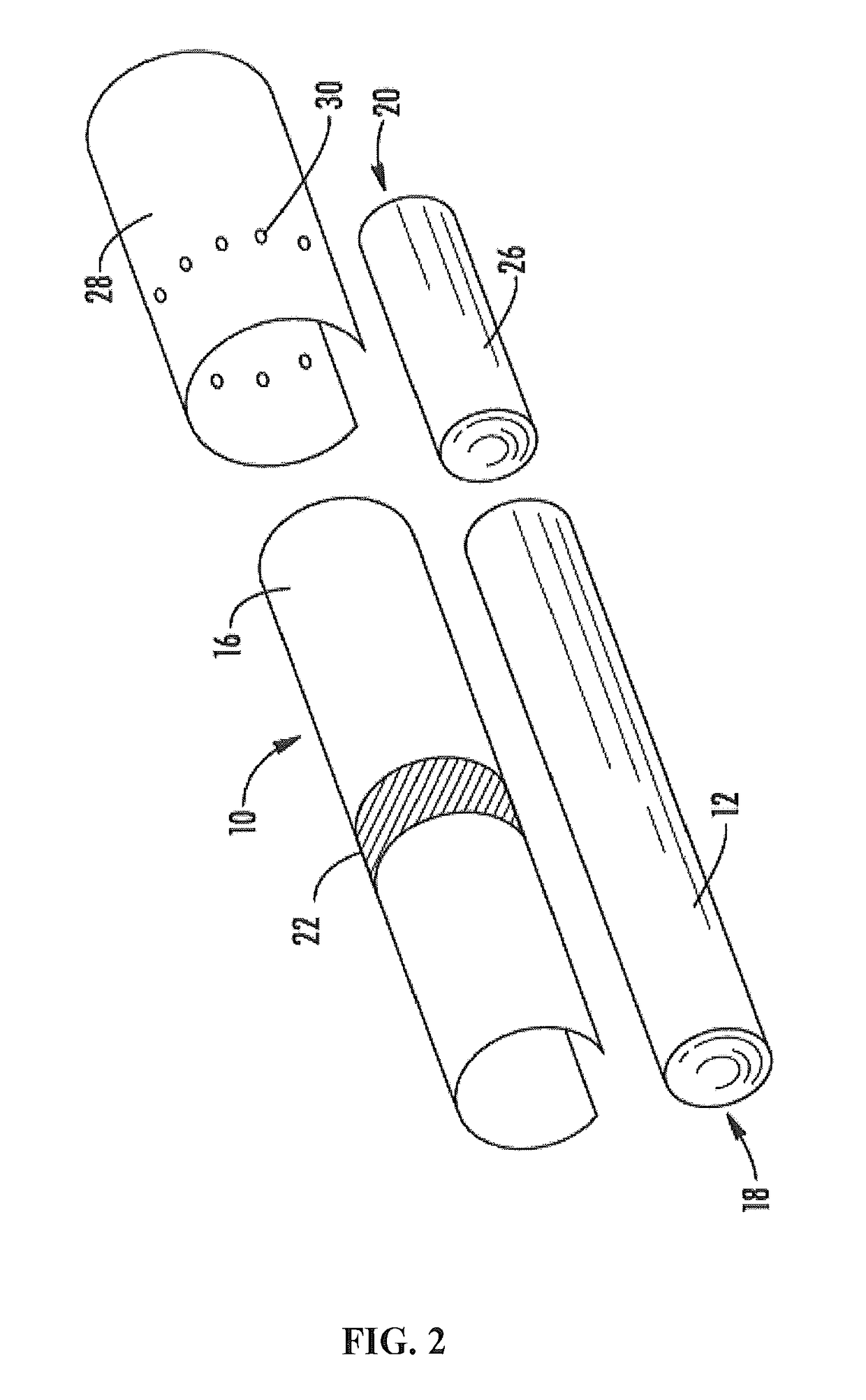Tobacco-derived cellulose material and products formed thereof
a technology of cellulose material and tobacco, which is applied in the direction of tobacco, packaging goods types, containers for flexible articles, etc., can solve the problems of little protection or no protection from crushing of softpack packages, and achieve the effect of improving the binding properties of fibrous materials
- Summary
- Abstract
- Description
- Claims
- Application Information
AI Technical Summary
Benefits of technology
Problems solved by technology
Method used
Image
Examples
example 1
[0106]In the following non-limiting example, duplicate soda cooks are carried out on stalk and root samples. The results are quite similar for the duplicates, showing good repeatability. Both materials produce pulp with a Kappa number in the bleachable range. The unbleached pulp for both samples is made into board-weight handsheets and tested for strength properties.
[0107]Cooks are done in two types of 10-liter batch digesters: the “classic” M&K unit, as well as a similar unit designed and built by North Carolina State University (NCSU). Both types feature indirect electrical heating and liquor recirculation.
[0108]After cooking, the material is fiberized by passing it through a Bauer 8-inch disk refiner with a plate gap of 0.020 inches. For the second replicate on each material, a second pass is done at 0.005 inches. The fiberized material, now considered pulp, is passed through a slotted screen with 0.010 inches, to remove chives and unpulped material. The screened accepts are test...
example 2
[0113]In the following non-limiting example, six soda cooks are carried out on stalk and root samples. Tobacco stalk and root pulps are made into board-weight handsheets for evaluation.
[0114]Two cooks (#5 and #6) are done in an M&K digester. A more practical 24% caustic charge is used, as well as a 160°C. maximum temperature and an H-factor of 1000. For the sixth cook (#6), the stalk is soaked overnight in excess distilled water, and the water is drained prior to pulping with the same conditions as for Cook #5. A second sample of stalk is soaked, drained, and then analyzed for yield loss during soaking. For Cook #6, the alkali charge is based on the original starting weight of material, instead of adjusting for the yield loss during soaking.
[0115]Pulping data are shown in Table 2 below.
[0116]
TABLE 2Pulping Results for Stalks and Roots SamplesCook#123456Tobacco TypeBurleyBurleyBurleyBurleyBurleyBurleyRaw Material TypeStalkRootStalkRootStalkStalkDigesterMK NCSUMKMKMKMKMKPulping DataPr...
example 3
[0123]In this non-limiting example, two small cooks are done on tobacco stalk using two different alkali charges. Cooks #7 and #8, both done on Burley stalk, are identical except that Cook #8 uses an alkali charge 4% lower (on OD) than Cook #7. Pulping data are shown in Table 4 below.
[0124]
TABLE 4Pulping Results for Stalk SamplesCook#78Tobacco TypeBurleyBurleyRaw Material TypeStalkStalkDigesterMKMKPulping DataPretreatment——NaOH, % on OD Material2723Liquor to Fiber Ratio6:16:1Max Temp ° C.160160Time to Temp, Minutes6060H Factor10001000Black Liquor pH12.113.1REA Residual Alkali (gpl as Na2O)3.96.0% Alkali Consumed91.384.3Pulp TestingTotal Yield, % of OD Raw Material43.937.6% Rejects in Pulp1.24.0Screened Yield, % on OD Raw Material35.224.4Kappa Number37.553.2Freeness594602ISO Brightness22.719.2Avg, Fiber Length, length-wtd, mm0.7770.882Fiber width, microns27.828.6Fines, % by number24.6220.60PFI Refining on BrownstockFreeness, CSF, at 500 revs5315821000 revs4444952000 revs3000 revs3213...
PUM
| Property | Measurement | Unit |
|---|---|---|
| temperature | aaaaa | aaaaa |
| temperature | aaaaa | aaaaa |
| temperature | aaaaa | aaaaa |
Abstract
Description
Claims
Application Information
 Login to View More
Login to View More - R&D
- Intellectual Property
- Life Sciences
- Materials
- Tech Scout
- Unparalleled Data Quality
- Higher Quality Content
- 60% Fewer Hallucinations
Browse by: Latest US Patents, China's latest patents, Technical Efficacy Thesaurus, Application Domain, Technology Topic, Popular Technical Reports.
© 2025 PatSnap. All rights reserved.Legal|Privacy policy|Modern Slavery Act Transparency Statement|Sitemap|About US| Contact US: help@patsnap.com



